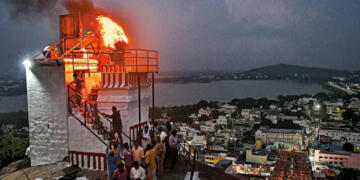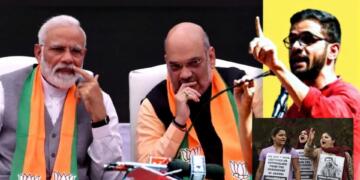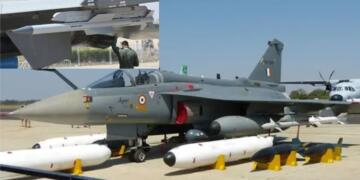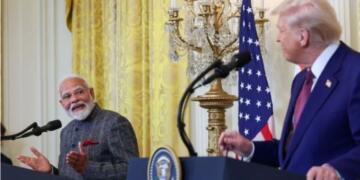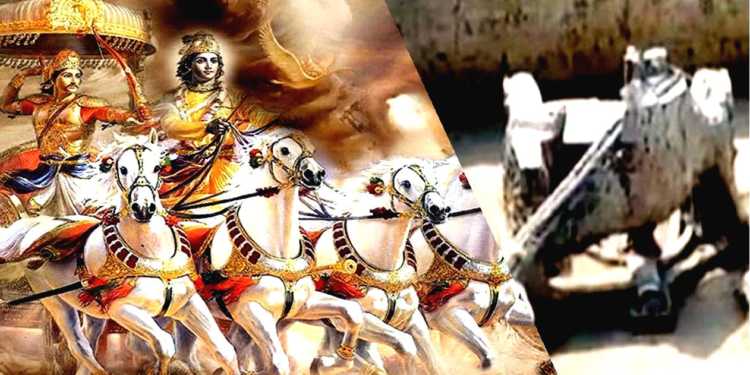Uttar Pradesh ASI has unearthed first-ever physical evidence of Copper Bronze Age Chariots in Baghpat. This is a sensational discovery by ASI by all counts and will set to change the hitherto held perceptions of ancient Indian History in totality. The excavation is a path-breaking discovery heralding a golden chapter in the ancient Indian History and Culture. The excavated shafts unearthed three royal Chariots and royal burial sites, with battlefield weapons and other related paraphernalia near Baghpat in Western Uttar Pradesh.
It is the first ever Chariot that has been found since the Indus Valley Civilization’s exploration was started in the 1920s. The significance of the discovery lies in the fact that it will not only challenge the Marxist historiography with regards to IVC but also pose a serious challenge to Aryan ‘invasion theory’, a staple of Marxist historiography. Even in Indus Valley sites, figurines of Bullock Carts were found, but not a Chariot. Chariot is used in battles by Royals. Some of the salient features of this discovery are:
The relics suggest the existence of a two-wheeled open vehicle that may have been driven by one person. The wheels rotated on a fixed axle linked by a draft pole to the yoke of a pair of animals. The axle was attached with a superstructure consisting of a platform protected by side-screens and a high dashboard. The wheels and the pole have been found decorated with copper triangles, symbolic of the rays of the sun.
The copper plated anthropomorphic figures -having horns and peepal-leafed crowns -found on the coffins that indicated a possibility of ‘royal burial’. For the first time in the entire sub-continent, this kind of a coffin has been unearthed. The cover is highly decorated with eight anthropomorphic figures. The sides of the coffins are also decorated with floral motifs. While coffins have been discovered during past excavations in Harappa, Mohenjo-Daro and Dholavira (Gujarat) but these were not laden with such ornamental copper decorations.
The swords, daggers, shields and a helmet confirmed the existence of a warrior population, and the discovery of earthen and copper pots, semi-precious and steatite beads, combs, and a copper mirror from the burial pits point towards a sophisticated craftsmanship and lifestyle.
“It is confirmed that they were a warrior class. The swords have copper-covered hilts and a medial ridge making it strong enough for warfare. We have also found shields, a torch and daggers” said S K Manjul, director of Delhi-based Institute of Archaeology.
What these findings can ultimately establish?
Prima facie, based on the contents of the discovery, some significant facts can be noted.
It can be observed that the present site at Sanauli Village is just 36 KM from the Harappan site at Alamgirpur.
Harappan era has been divided into five phases
1) Ravi / Hakra (3300-2800BC)
2) Early Harappa (2800-2600BC)
3) Mature (2600-1900BC)
4) Transitional (1900-1800BC)
5) Late Harappa (1800-1300BC).
Now the present findings were identified with ‘Mature’ period. Also, the present excavation site is in the proximity of Alamgirpur, which is a Harappan site considered to be at the eastern border of Indus Valley Civilization’s extent. This area near Meerut is also known as ‘Parasaram ka -Khera’. This is a truly a thrilling factor for the reason that in Alamgirpur an artefact (a vessel) bearing a ‘bear head’ was also found. If this is believed to be a symbolic representation of ‘Jambavan’ of Ramayana, it has some sensible connection with Parasurama as the trio Jhambavan, Parushuram and Hanuman were considered immortals. In fact, Jambavan is also mentioned in Mahabharata.
Bijnor which is 90 KM from Alamgirpur is mentioned in Mahabharata associated with the King Vidhura. There is Vidhura Kutir in Bijnor. Bijnor, being part of IVC, the present findings of ‘Chariots’, anthropomorphic figures and ‘Antenne Swords’ are all indicative of a distinguished Royal story closely resembling Mahabharata’s events. Bijnor is known as “Vyghraprastha’ and was founded by Pandavas.
Next, the ‘Chariot’ discovery would potentially change the hitherto held concept of the existence of ‘Horses’ in IVC. Horse bones were found in another IVC site, Surkotada in Kutch Gujarat some years ago. Royal Chariots were drawn by horses and with one single charioteer. This was also explained by the archaeologist.
“The wheels of the chariots rotated on a fixed axle linked by a draft pole to the yoke of a pair of animals. The superstructure attached to the axle contains a platform, protective side screens and a dashboard. The wheels and the pole are decorated with copper motifs symbolising the rays of the sun. Although the experts are yet to be certain on whether the chariots were pulled by bulls or horse, they are of the opinion that it was probably horses”
As the Chariot relics were found in a Royal burial with battlefield weapons, the Chariot was obviously drawn by horses. It cannot be driven by bulls. Going by the built of the chariots, it must be a speed vehicle and combating in nature, and hence ‘slow’ moving bulls to be its yankers, cannot be even imagined.
Hence the discovery of a well-built Chariot makes the archaeologists rethink the historiography of ‘Mature’ period of IVC.
“This is the very first-time such evidence has ever been recovered. The coffins and chariots are something we haven’t encountered before. This discovery is not only important in the context of India but the world”, according to SK Manjul.
This discovery further strengthens the fact that the entire region of Baghpat and Bijnor which is identified as IVC eastern region were booming under a large Kingdom, with Royal dominion, customs and practices. The ‘Anthropomorphic figurines, decorative weapons, decorated Chariot wheels, advanced alchemic, metallurgy and the geographic region’s ancient habitats perfectly matching with the events described in Hindu mythology etc indicates to Mahabharata heritage to the present discovery. However, the Leftists reaction to the Baghpat discovery is rather repulsive and more than stunning.
The Print asked the opinion of Mrs Ruchika Sharma on the Baghpat discovery, an unknown history doctoral scholar at JNU. She says the ASI has to clarify its findings. “We should first obtain clarity on why ASI is calling them chariots. It isn’t uncommon for a late Harappan site to have bullock carts. There is already Evidence of such terracotta carts,” she said. This history doctoral scholar should understand that ‘bullock carts’ will not be decorated with copper motifs. The wheels will not be carved with design patterns, and Bullock carts will not be found along with battlefield weapons. The chariot was found in a Royal burial.
I expected this news, at least this time, on the first page of our national dailies. But, the Baghpat discovery appeared on the 11th page of TOI Bangalore. A proud moment for all Indians, a moment to commemorate, yet for the leftists, it is another shock after the NASA findings on Ram Sethu.



